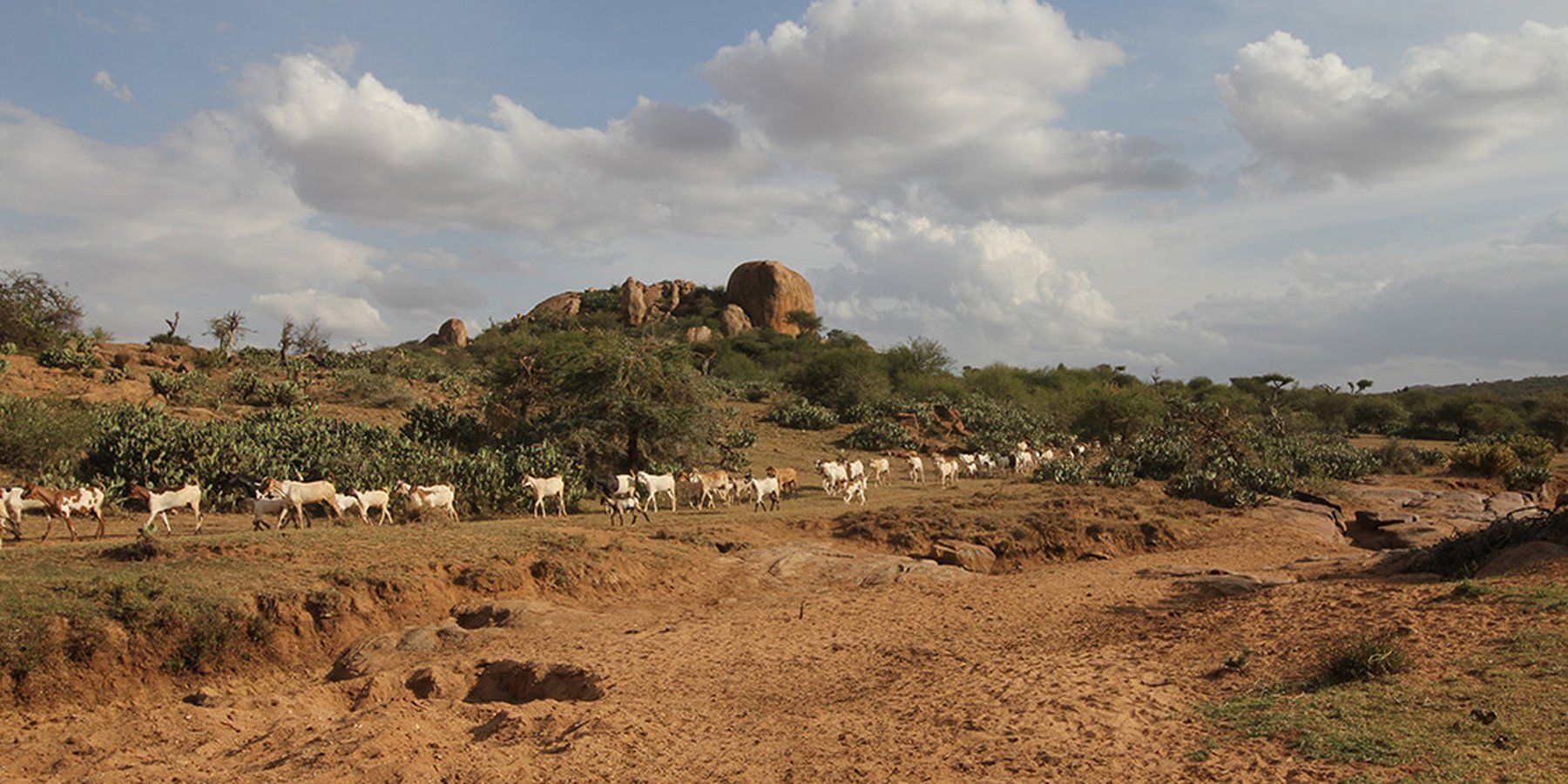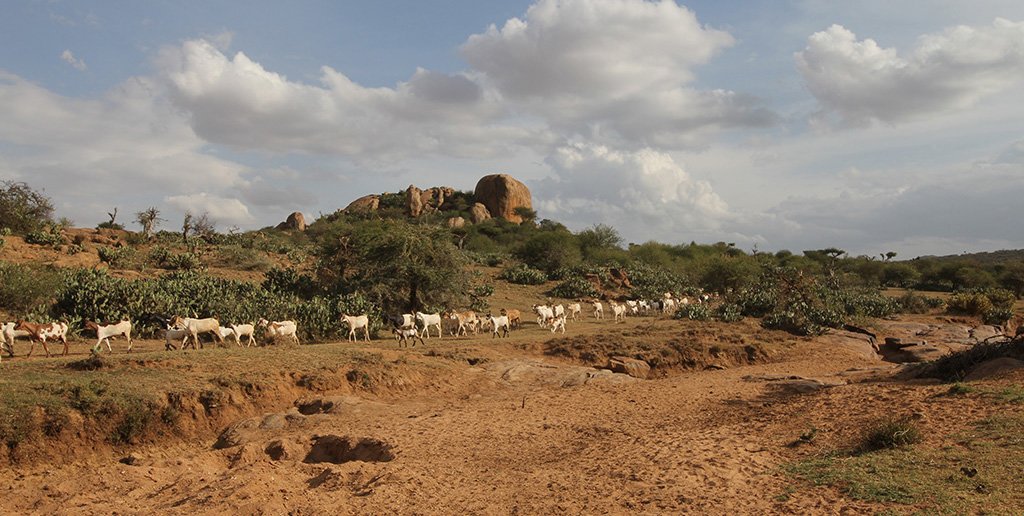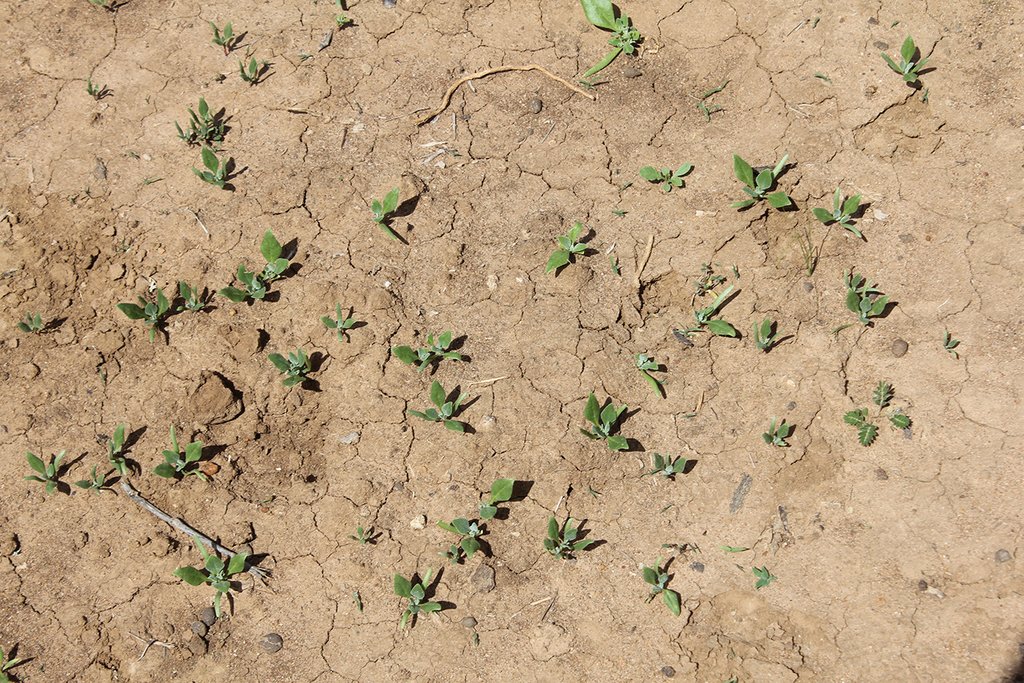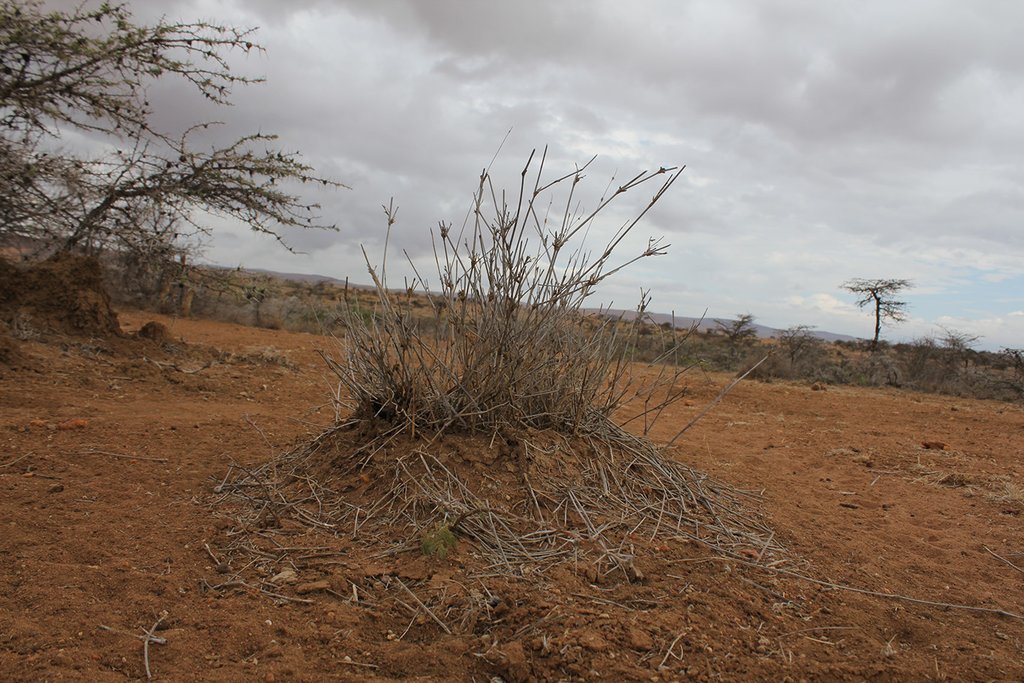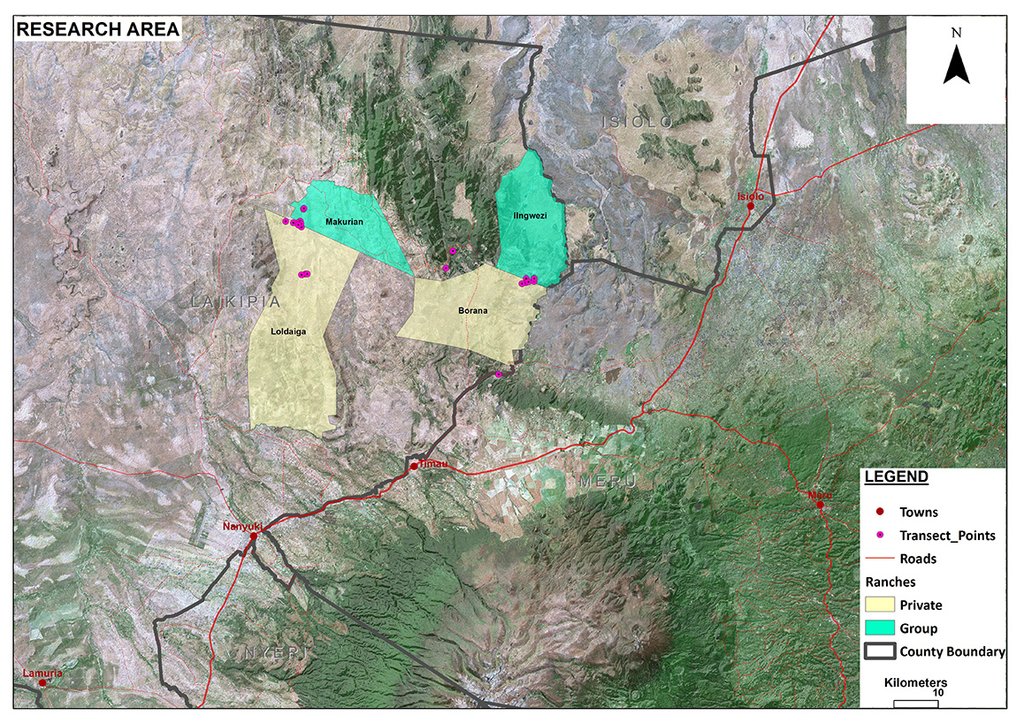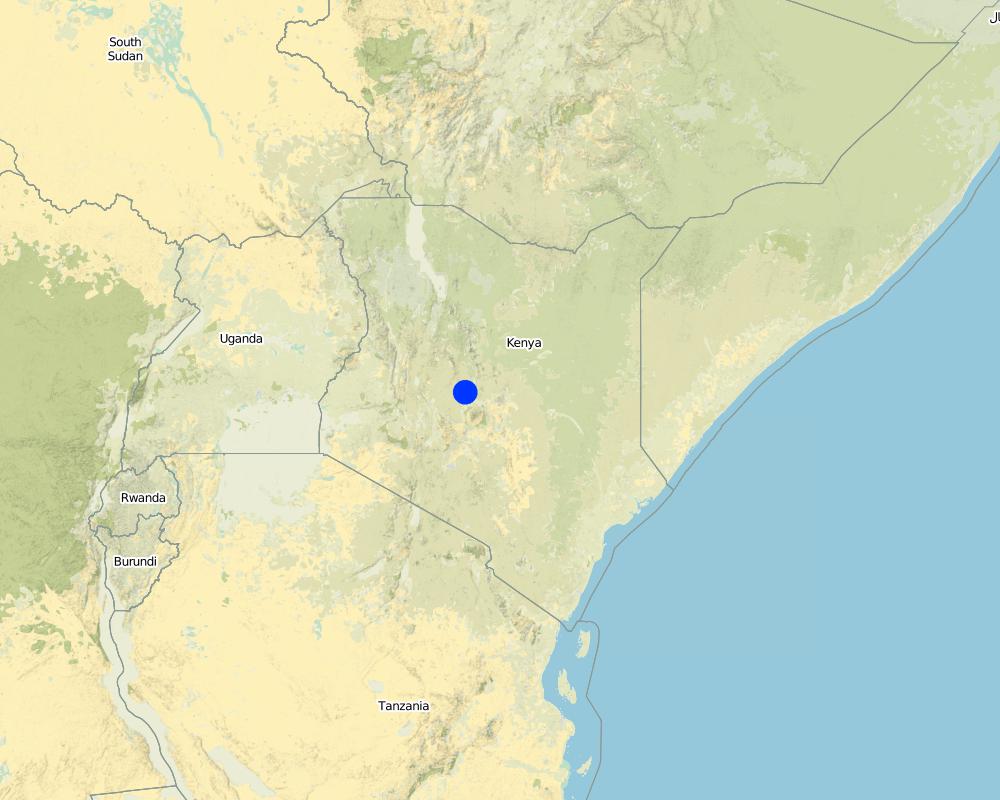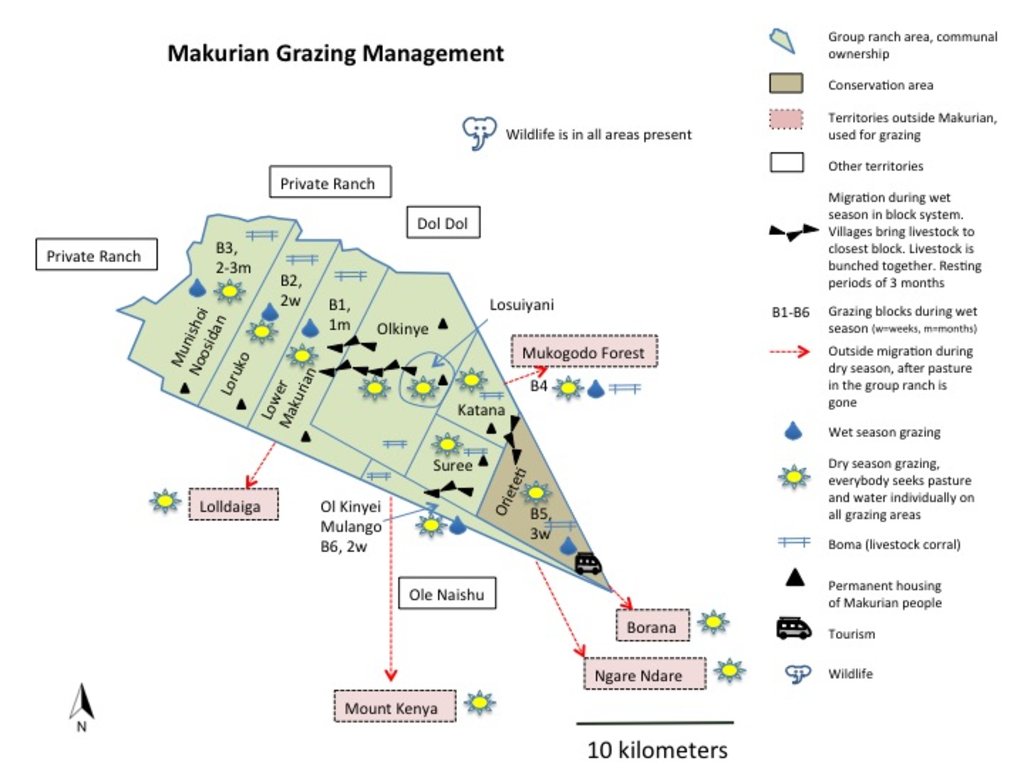Makurian Group Ranch Grazing with Holistic Management Principles [Kenya]
- Création :
- Mise à jour :
- Compilateur : Michael Herger
- Rédacteur : –
- Examinateurs : Donia Mühlematter, Hanspeter Liniger, Rima Mekdaschi Studer, Alexandra Gavilano
technologies_2990 - Kenya
- Résumé complet en PDF
- Résumé complet en PDF pour impression
- Résumé complet dans le navigateur
- Résumé complet (non formaté)
- Makurian Group Ranch Grazing with Holistic Management Principles: 1 février 2018 (inactive)
- Makurian Group Ranch Grazing with Holistic Management Principles: 22 février 2018 (inactive)
- Makurian Group Ranch Grazing with Holistic Management Principles: 3 septembre 2018 (inactive)
- Makurian Group Ranch Grazing with Holistic Management Principles: 9 mai 2019 (public)
Voir les sections
Développer tout Réduire tout1. Informations générales
1.2 Coordonnées des personnes-ressources et des institutions impliquées dans l'évaluation et la documentation de la Technologie
Personne(s)-ressource(s) clé(s)
exploitant des terres:
Sepeika Milton
Makurian Group Ranch
Kenya
1.3 Conditions relatives à l'utilisation par WOCAT des données documentées
Le compilateur et la(les) personne(s) ressource(s) acceptent les conditions relatives à l'utilisation par WOCAT des données documentées:
Oui
1.4 Déclaration sur la durabilité de la Technologie décrite
Est-ce que la Technologie décrite ici pose problème par rapport à la dégradation des terres, de telle sorte qu'elle ne peut pas être déclarée comme étant une technologie de gestion durable des terres?
Oui
Commentaires:
Makurian rangeland is in bad condition. The land is largely degraded and dominated by the invasive species "Opuntia". Makurian Group Ranch has abandoned the in 2007 implemented "Holistic Management" principles. However, one has to take into account that Masai pastoralists have historically been squeezed from all sides into smaller areas. Compare Herger (2018).
2. Description de la Technologie de GDT
2.1 Courte description de la Technologie
Définition de la Technologie:
The grazing principles of a Masai group ranch (pastoralists) deal with high numbers of livestock in semi-arid lands with very limited water resources. Makurian has abandoned "Holistic Management" principles and applies a more traditional management system today. There is a grazing plan for the rains, while during the dry season everybody seeks for water and pasture individually. Bare land is recovered by "Boma” technology (strategic corralling of animals overnight) and reseeding. The rangeland is due to high stocking rates severely degraded with lots of erosion, bare ground, and invasive species. High stocking rates have on the one hand historical and political reasons and on the other hand socioeconomic rationales.
2.2 Description détaillée de la Technologie
Description:
On Makurian Masai Group Ranch, livestock production management is through a combination of traditional livestock keeping practices and newly introduced management principles. Livestock production at Makurian is for subsistence and local use, and has very high cultural significance.
During the wet season, livestock are “bunched” together and rotational grazing in blocks is practiced. The management team (elders) group all livestock from each village (16 villages) and each uses the block next to their village. Livestock are hardly separated (cows, heifers, steers, bulls all herded together).
o Block 1: Lower Makurian - 1 month
o Block 2: Makurian Loruko - 2 weeks (next to Lolldaiga Northern Gate)
o Block 3: Munishoi Noosidan - 2-3 months
o Block 4: Mukogodo Forest - 1-2 months
o Block 5: Orieteti Conservation Area - 3 weeks. Soft grass, runs out quickly.
o Block 6: Ol Kinyei Mulango - 2 weeks. Next to Olenaisho
They apply resting periods of three months after usage (if this rule is broken, the owner is punished by a fine of one livestock unit).
When it becomes dry, everyone is responsible for their own livestock. Owners of livestock want to maintain and decide about their livestock individually, this is why "Holistic Management" and specific grazing plans for the dry season did not work.
In comparison to earlier days when the whole family moved, and livestock was herded by morans (young warriors), they hire external herders nowadays (800 herders in total). Herders seek whatever water and pasture remains on the group ranch, then move on to:
(a) Ngare Ndare forest: 1,000 cattle and 1,000 sheep and goats (shoats) per year on average, for 1-2 months, over an area of 250 km2;
(b) Mukogodo forest: 3,000 cattle and 4,000 shoats per year on average, for 3-4 weeks, over 250 km2, and
(c) Mount Kenya: 12,000 cattle and 5,000 shoats on average per year, for 1-2 months, on an undefined area.
In Mukogodo forest, Makurian Masai have also officially settled, in Ngare Ndare forest on the other hand they graze on the basis of an informal agreement and on Mount Kenya it is not official pasture - but grazing is tolerated). They are also assisted by private ranches to graze during droughts (Lolldaiga and Borana; for every 1,000 units, they usually pay 5 Ksh per cow per month: a token amount). On one private ranch (Borana) they also graze steers and cows for fattening and selling.
Furthermore, Laikipia rangelands support some of the highest densities of wildlife in Kenya, however, group ranches less so than private ranches. The wild herbivore biomass density on group ranches is by Georgiadis et al. (2007) estimated at 205 ha /TLU.
Bomas (corrals in Kiswahili) for the livestock are constructed in traditional style, where animals are kept closely bunched together in enclosures overnight. Bomas are strategically located on denuded land to rehabilitate the land (through dung accumulation and breaking the soil crust by hoof action). Every homestead has one boma (approximately 1,500 in total in the whole Group Ranch). When herders are moving with livestock, temporary bomas are constructed.
Sales are usually need-driven (e.g. for school fees) within a family. They sell to the nearest local markets (in DolDol and Nanyuki) or directly to butchers. Makurian is also part of the "Dung Market" in Mukogodo District, where livestock dung is sold as manure for crop production. Moreover, Makurian makes additional income by harvesting sand and selling it for construction.
2.3 Photos de la Technologie
2.5 Pays/ région/ lieux où la Technologie a été appliquée et qui sont couverts par cette évaluation
Pays:
Kenya
Région/ Etat/ Province:
Laikipia
Autres spécifications du lieu:
Mukogodo Division
Spécifiez la diffusion de la Technologie:
- répartie uniformément sur une zone
Si la Technologie est uniformément répartie sur une zone, précisez la superficie couverte (en km2):
78,0
S'il n'existe pas d'informations exactes sur la superficie, indiquez les limites approximatives de la zone couverte:
- 10-100 km2
Commentaires:
The area size of the group ranch is 68 km2, however, the total area affected by livestock is 78 km2.
Map
×2.6 Date de mise en œuvre de la Technologie
Si l'année précise est inconnue, indiquez la date approximative: :
- il y a moins de 10 ans (récemment)
2.7 Introduction de la Technologie
Spécifiez comment la Technologie a été introduite: :
- grâce à l'innovation d'exploitants des terres
Commentaires (type de projet, etc.) :
Holistic Management approach by Allan Savory was implemented in 2007, which was abandoned after a few years. This documentation focuses on the traditional system and new management principles they introduced since then. For Holistic Management see "Il Ngwesi" and "Borana" documentations.
3. Classification de la Technologie de GDT
3.1 Principal(aux) objectif(s) de la Technologie
- améliorer la production
- réduire, prévenir, restaurer les terres dégradées
- préserver l'écosystème
- conserver/ améliorer la biodiversité
3.2 Type(s) actuel(s) d'utilisation des terres, là où la Technologie est appliquée

Pâturages
Pâturage extensif:
- Pastoralisme de type semi-nomade
Type d'animal:
- chameaux
- caprine
- mules et ânes
- ovins
- cattle
Produits et services:
- viande
- lait
Espèces:
caprine
Nombre:
20000
Espèces:
ovins
Nombre:
10000

Implantations, infrastructures
- Habitats, buildings
Remarques:
Villages, bomas, manyattas.
8'000 inhabitans.
Commentaires:
Main animal species and products: Cattle, goats, sheep, donkeys, camels. Meat and milk production (also blood) and as a bank/ value asset. Subsistence and local production. Livestock: 13,500 TLU, Stocking Rate 0.6 ha/TLU calculating the total area used by livestock (78 km2). Pressure on land (including wildlife density of 205 ha/TLU): 0.6 ha/TLU Livestock numbers: 15,000 cattle, 30,000 shoats (ratio goats - sheep 2:1) Livestock fluctuations (per year): -500 cattle sales, -4,000 shoats sales, +100 cattle purchase, +350 shoats purchase, -3,500 shoats slaughtered. +6,000 cattle, + 15,000 shoats due to natural breeding. On average, 2200 steers on Borana rangeland for fattening purpose. During droughts, livestock move to neighbouring private ranches (1,000 cows each on Lolldaiga and Borana on average) Wildlife: Giraffe, antelope/gazelle (e.g. gerenuk, impala, Thomson's gazelle), baboons, zebras, dikdik, hares, elephants, and more.
Number of growing seasons per year: 2
Short rains in November and December. Long rains in April and May. Rains from (October) November to December are usually better in this area. Rainfalls with strong local variations and changing regimes.
Livestock density: 13’500 TLU, Stocking Rate 0.6 ha/TLU
3.4 Approvisionnement en eau
Approvisionnement en eau des terres sur lesquelles est appliquée la Technologie:
- pluvial
3.5 Groupe de GDT auquel appartient la Technologie
- pastoralisme et gestion des pâturages
- Amélioration de la couverture végétale/ du sol
3.6 Mesures de GDT constituant la Technologie

modes de gestion
- M2: Changement du niveau de gestion / d'intensification
- M4: Changement majeur dans le calendrier des activités
3.7 Principaux types de dégradation des terres traités par la Technologie

érosion hydrique des sols
- Wt: perte de la couche superficielle des sols (couche arable)/ érosion de surface
- Wg: ravinement/ érosion en ravines

érosion éolienne des sols
- Et: perte de la couche superficielle des sols (couche arable)

dégradation physique des sols
- Pc: compaction
- Pk: scellage et encroûtement
- Pi: imperméabilisation des sols

dégradation biologique
- Bc: réduction de la couverture végétale
- Bh: perte d’habitats
- Bq: baisse de la quantité/ biomasse
- Bs: baisse de la qualité et de la composition/ diversité des espèces
- Bl: perte de la vie des sols
Commentaires:
Across the grasslands and rangelands, an increase in bare land and bush has been a clear trend all over Laikipia for many years, both on community-owned lands and private ranches. Major identified ecological problems caused (partly) by livestock production in the research area are: major identified ecological problems (partly) caused by livestock production are: bare ground, low contents of soil organic carbon and plant-available nutrients, soil erosion (sealing, crusting, rills and gullies, water flow patterns, sheet erosion, pedestals), poor soil properties, undesirable species, and (increasing) woody and invasive species (Makurian is heavily affected by the invasion of Opuntia strica species). The current major problem on rangelands is the invasive species Opuntia stricta, which, however, only could spread that widely because of degraded land in the first place. The technology aims at improving vegetation cover of the land and thereby reducing further degradation and restoring degraded land.
3.8 Prévention, réduction de la dégradation ou réhabilitation des terres dégradées
Spécifiez l'objectif de la Technologie au regard de la dégradation des terres:
- réduire la dégradation des terres
- restaurer/ réhabiliter des terres sévèrement dégradées
4. Spécifications techniques, activités, intrants et coûts de mise en œuvre
4.1 Dessin technique de la Technologie
4.2 Informations générales sur le calcul des intrants et des coûts
Spécifiez la manière dont les coûts et les intrants ont été calculés:
- par superficie de la Technologie
Indiquez la taille et l'unité de surface:
Herders, animals treatment (for the total area affected by livestock = 78km2)
Indiquez la monnaie utilisée pour le calcul des coûts:
- dollars américains
Indiquez le coût salarial moyen de la main d'œuvre par jour:
1.5
4.3 Activités de mise en place/ d'établissement
| Activité | Calendrier des activités (saisonnier) | |
|---|---|---|
| 1. | Grazing planning for bunched animals (livestock from all households) | |
| 2. | Hiring herders, supervisors, watchmen etc |
4.4 Coûts et intrants nécessaires à la mise en place
| Spécifiez les intrants | Unité | Quantité | Coûts par unité | Coût total par intrant | % des coût supporté par les exploitants des terres | |
|---|---|---|---|---|---|---|
| Main d'œuvre | unknown |
4.5 Activités d'entretien/ récurrentes
| Activité | Calendrier/ fréquence | |
|---|---|---|
| 1. | Herders, supervisors, watchmen etc | |
| 2. | Animal treatments (vaccination, spraying, injections) | |
| 3. | Planning activites | |
| 4. | Boma Management (mainly movement of Bomas) |
4.6 Coûts et intrants nécessaires aux activités d'entretien/ récurrentes (par an)
| Spécifiez les intrants | Unité | Quantité | Coûts par unité | Coût total par intrant | % des coût supporté par les exploitants des terres | |
|---|---|---|---|---|---|---|
| Main d'œuvre | Herders, watchmen, supervisors | Person-days | 260000,0 | 1,5 | 390000,0 | |
| Main d'œuvre | Engaged population in livestock production | 720000,0 | 1,5 | 1080000,0 | ||
| Autre | Animals treatments | Per TLU | 13500,0 | 3,5 | 47250,0 | |
| Coût total d'entretien de la Technologie | 1517250,0 | |||||
| Coût total d'entretien de la Technologie en dollars américains (USD) | 1517250,0 | |||||
Commentaires:
Every family hires their own herder during the dry season. The family is staying put. Inhabitants are also considered as labor since they are usually all engaged in livestock production. However, milk and blood production are not considered.
Animal treatments consist of vaccination, spraying (ticks), injections.
4.7 Facteurs les plus importants affectant les coûts
Décrivez les facteurs les plus importants affectant les coûts :
Herders
5. Environnement naturel et humain
5.1 Climat
Précipitations annuelles
- < 250 mm
- 251-500 mm
- 501-750 mm
- 751-1000 mm
- 1001-1500 mm
- 1501-2000 mm
- 2001-3000 mm
- 3001-4000 mm
- > 4000 mm
Spécifiez la pluviométrie moyenne annuelle (si connue), en mm:
378,00
Spécifications/ commentaires sur les précipitations:
Strong local (and temporal) variation, changing rainfall regimes. Makurian generally drier than Lolldaiga.
Indiquez le nom de la station météorologique de référence considérée:
Rainfall gauge Lolldaiga Northern Gate (neighbouring ranch)
Zone agro-climatique
- semi-aride
5.2 Topographie
Pentes moyennes:
- plat (0-2 %)
- faible (3-5%)
- modéré (6-10%)
- onduleux (11-15%)
- vallonné (16-30%)
- raide (31-60%)
- très raide (>60%)
Reliefs:
- plateaux/ plaines
- crêtes
- flancs/ pentes de montagne
- flancs/ pentes de colline
- piémonts/ glacis (bas de pente)
- fonds de vallée/bas-fonds
Zones altitudinales:
- 0-100 m
- 101-500 m
- 501-1000 m
- 1001-1500 m
- 1501-2000 m
- 2001-2500 m
- 2501-3000 m
- 3001-4000 m
- > 4000 m
5.3 Sols
Profondeur moyenne du sol:
- très superficiel (0-20 cm)
- superficiel (21-50 cm)
- modérément profond (51-80 cm)
- profond (81-120 cm)
- très profond (>120 cm)
Texture du sol (de la couche arable):
- grossier/ léger (sablonneux)
- moyen (limoneux)
Texture du sol (> 20 cm sous la surface):
- grossier/ léger (sablonneux)
- moyen (limoneux)
Matière organique de la couche arable:
- faible (<1%)
Si disponible, joignez une description complète du sol ou précisez les informations disponibles, par ex., type de sol, pH/ acidité du sol, capacité d'échange cationique, azote, salinité, etc.
Red and brown sandy soils. Black cotton soil. Luvisol, Regosol, Vertisol
SOC 0.8 %
pH: 6.4
Clay: 9 %
Silt: 41 %
Sand: 50 %
Fore more data on rangeland health see Herger (2018)
5.4 Disponibilité et qualité de l'eau
Profondeur estimée de l’eau dans le sol:
> 50 m
Disponibilité de l’eau de surface:
moyenne
Qualité de l’eau (non traitée):
faiblement potable (traitement nécessaire)
La salinité de l'eau est-elle un problème? :
Non
La zone est-elle inondée?
Non
5.5 Biodiversité
Diversité des espèces:
- moyenne
Diversité des habitats:
- faible
Commentaires et précisions supplémentaires sur la biodiversité:
Grassed acacia bushland. Bare land up to 70% during dry season. Loss of (native) vegetation. Invasive species coming in. Dominant grasses: Eragrostis species, Cynadon species, Hyparrhenia species, Kelenger species. Dominant shrubs: Opuntia, Lyceum europaeum, Barleria acuthodies. Dominant trees: Acacia drepanolobium, Acacia etbaica. Detailed list of all species (also wildlife) available (see Herger 2018).
5.6 Caractéristiques des exploitants des terres appliquant la Technologie
Sédentaire ou nomade:
- Semi-nomade
Orientation du système de production:
- exploitation mixte (de subsistance/ commerciale)
Revenus hors exploitation:
- moins de 10% de tous les revenus
Niveau relatif de richesse:
- pauvre
Individus ou groupes:
- individu/ ménage
- groupe/ communauté
Niveau de mécanisation:
- travail manuel
Genre:
- femmes
- hommes
Age des exploitants des terres:
- jeunes
- personnes d'âge moyen
Indiquez toute autre caractéristique pertinente des exploitants des terres:
Masai people. 8'000 Masai living in Makurian. Traditional livestyle. Livestock with very high cultural value.
Have been historically "squeezed" from all sides into smaller areas for livestock keeping. Future of pastoralism is in question.
5.7 Superficie moyenne des terres utilisées par les exploitants des terres appliquant la Technologie
- < 0,5 ha
- 0,5-1 ha
- 1-2 ha
- 2-5 ha
- 5-15 ha
- 15-50 ha
- 50-100 ha
- 100-500 ha
- 500-1 000 ha
- 1 000-10 000 ha
- > 10 000 ha
Cette superficie est-elle considérée comme de petite, moyenne ou grande dimension (en se référant au contexte local)?
- petite dimension
Commentaires:
This applies for households that are staying put. Herders trek livestock on a total area of over 10'000 ha.
5.8 Propriété foncière, droits d’utilisation des terres et de l'eau
Propriété foncière:
- communauté/ village
Droits d’utilisation des terres:
- communautaire (organisé)
Droits d’utilisation de l’eau:
- accès libre (non organisé)
5.9 Accès aux services et aux infrastructures
santé:
- pauvre
- modéré
- bonne
éducation:
- pauvre
- modéré
- bonne
assistance technique:
- pauvre
- modéré
- bonne
emploi (par ex. hors exploitation):
- pauvre
- modéré
- bonne
marchés:
- pauvre
- modéré
- bonne
énergie:
- pauvre
- modéré
- bonne
routes et transports:
- pauvre
- modéré
- bonne
eau potable et assainissement:
- pauvre
- modéré
- bonne
services financiers:
- pauvre
- modéré
- bonne
6. Impacts et conclusions
6.1 Impacts sur site que la Technologie a montrés
Impacts socio-économiques
Production
production fourragère
Commentaires/ spécifiez:
Lack of rain. Impact analysis is comparing the current state vs. some 10 years ago when they applied Holistic Management. This is why improvements are indicated according to the land user, even though the land is severely degraded.
qualité des fourrages
production animale
gestion des terres
Disponibilité et qualité de l'eau
disponibilité de l'eau potable
qualité de l'eau potable
Commentaires/ spécifiez:
less salt
disponibilité de l'eau pour l'élevage
qualité de l'eau pour l'élevage
Revenus et coûts
charge de travail
Commentaires/ spécifiez:
Compared to HM it has decreased, because of higher numbers of livestock it has increased though
Impacts socioculturels
sécurité alimentaire/ autosuffisance
droits d'utilisation des terres/ de l'eau
connaissances sur la GDT/ dégradation des terres
Commentaires/ spécifiez:
More traditional knowledge than with Holistic Management
apaisement des conflits
Commentaires/ spécifiez:
Other communities
Impacts écologiques
Cycle de l'eau/ ruissellement
quantité d'eau
qualité de l'eau
ruissellement de surface
Commentaires/ spécifiez:
Opuntia
nappes phréatiques/ aquifères
évaporation
Biodiversité: végétale, animale
Couverture végétale
Commentaires/ spécifiez:
Opuntia (an invasive cactus) is chasing out native plants and consuming water. Elephants are destroying trees (high density of elephants, Opuntia is additionally attracting elephants)
diversité végétale
Commentaires/ spécifiez:
Opuntia
diversité animale
Commentaires/ spécifiez:
More wildlife coming in, roaming even in villages. Elephants problematic; breaking fences
diversité des habitats
Commentaires/ spécifiez:
Wildlife numbers are declining drastically. Indigenous vegetation is being driven out by invasive species like Opuntia.
Réduction des risques de catastrophe et des risques climatiques
impacts de la sécheresse
Commentaires/ spécifiez:
Resilience has worsened
6.2 Impacts hors site que la Technologie a montrés
Précisez l'évaluation des impacts extérieurs (sous forme de mesures):
All listed impacts are as perceived by land users according to Milton Sepeika, Chief of Makurian. In his opinion, abandoning Holistic Management principles had many advantages. According to him, animal production has increased. Though he recognices the bad condition of the land and poor conditon of livestock. He mainly blames the drought and the Opuntia invasion for these problems. Results from a rangeland health assessment (only ecological conditions) show heavily degraded ecological conditions (dry season up to 70% bare soil, poor soil and vegetation, erosions features, inability of producing annual and perennial grasses after rains etc) (compare Herger 2018). A
6.3 Exposition et sensibilité de la Technologie aux changements progressifs et aux évènements extrêmes/catastrophes liés au climat (telles que perçues par les exploitants des terres)
Changements climatiques progressifs
Changements climatiques progressifs
| Saison | Augmentation ou diminution | Comment la Technologie fait-elle face à cela? | |
|---|---|---|---|
| autre changement climatique progressif | Greater variation of seasonal rainfall, more intense rainfalls, change in rainfall regimes in general (see Schmocker 2013 and Imfeld 2016). | augmente | pas bien |
Extrêmes climatiques (catastrophes)
Catastrophes climatiques
| Comment la Technologie fait-elle face à cela? | |
|---|---|
| canicule | pas bien |
6.4 Analyse coûts-bénéfices
Quels sont les bénéfices comparativement aux coûts de mise en place (du point de vue des exploitants des terres)?
Rentabilité à court terme:
négative
Rentabilité à long terme:
légèrement négative
Quels sont les bénéfices comparativement aux coûts d'entretien récurrents (du point de vue des exploitants des terres)?
Rentabilité à court terme:
négative
Rentabilité à long terme:
légèrement négative
6.5 Adoption de la Technologie
- 1-10%
De tous ceux qui ont adopté la Technologie, combien d'entre eux l'ont fait spontanément, à savoir sans recevoir aucune incitation matérielle, ou aucune rémunération? :
- 0-10%
6.6 Adaptation
La Technologie a-t-elle été récemment modifiée pour s'adapter à l'évolution des conditions?
Oui
Si oui, indiquez à quel changement la Technologie s'est adaptée:
- changements/ extrêmes climatiques
Spécifiez l'adaptation de la Technologie (conception, matériaux/ espèces, etc.):
Masai people have changed their livestock composition towards owning more smallstock (goats and sheep) than cattle. Goats are tolerant to drought, and as browsers they don't need grass. They can be turned into money much quicker than a cow in times of need. Their faster reproductive cycle means they can rebuild numbers faster than cattle after losses through drought.
6.7 Points forts/ avantages/ possibilités de la Technologie
| Points forts/ avantages/ possibilités du point de vue de l'exploitant des terres |
|---|
| Everybody makes their own decision about their livestock (during the dry season). Owners stay in charge. |
| Grazing principles and plans lead to community control. |
| Traditional knowledge |
| Fewer costs |
| Less of effort (during the dry season no bunching of animals) |
| Fewer trees cut. During Holistic Management times many trees had to be cut to create two big bomas every month. |
| Can enrich land, livestock is tilling ground (seeds don't go away - kept in ground due to "tilling") |
6.8 Faiblesses/ inconvénients/ risques de la Technologie et moyens de les surmonter
| Faiblesses/ inconvénients/ risques du point de vue de l’exploitant des terres | Comment peuvent-ils être surmontés? |
|---|---|
| Brings in conflicts. If you start to protect and maintain your grass, thieves come in. | |
| Spread of diseases when animals from different places with different diseases are brought together during the wet season |
7. Références et liens
7.1 Méthodes/ sources d'information
- visites de terrain, enquêtes sur le terrain
4 field visits with included "rangeland health assessment" in different parts of Makurian (mostly next to Lolldaiga Northern Gate) where I could see the condition of the land as well as several other visits of the area.
- interviews/entretiens avec les exploitants des terres
Several meetings with chief, rangeland specialist and botanist of Makurian.
- interviews/ entretiens avec les spécialistes/ experts de GDT
Truman Young
Dan Rubenstein
Dino Martins
John Letai
Samali Letai
Peter Hetz
Dominic Maringa
Joseph Putunoi
Patrick Ekodere
- compilation à partir de rapports et d'autres documents existants
Scientific papers, LWF reports etc.
Quand les données ont-elles été compilées (sur le terrain)?
22/01/2017
7.2 Références des publications disponibles
Titre, auteur, année, ISBN:
Imfeld, N. (2016). Modeling Seasonal and Annual Precipitation using long-term Climate Records and Topography. MSc Thesis. University of Bern.
Disponible à partir d'où? Coût?
Online
Titre, auteur, année, ISBN:
Herger, M.B. (2018). Environmental Impacts of Red Meat Production. MSc Thesis. University of Bern.
Disponible à partir d'où? Coût?
University of Bern
Titre, auteur, année, ISBN:
Georgiadis, N.J., Olivero, I.N., Romanach, S.S. (2007). Savanna herbivore dynamics in a livestock-dominated landscape: I. Dependence on land use, rainfall, density, and time. Biology Conservation 137(3): 461-472.
Disponible à partir d'où? Coût?
Online
Liens et modules
Développer tout Réduire toutLiens
Aucun lien
Modules
Aucun module trouvé


